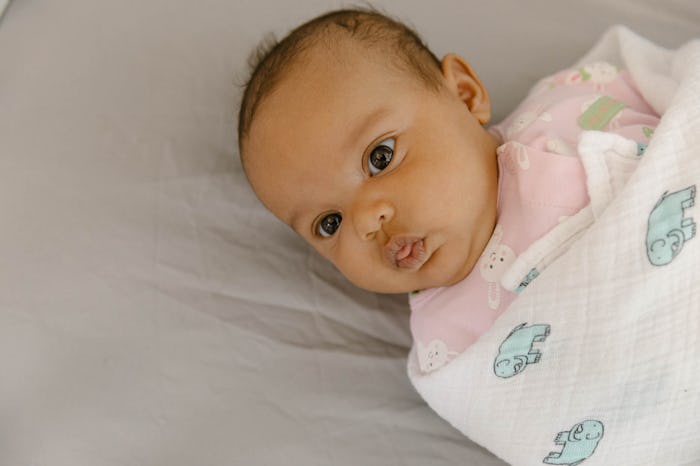Whether your baby's finally mastered sleeping through the night, or is on the cusp of falling into a solid sleep routine, parents often find themselves wondering what's considered "safe" when putting their baby to bed. With all the adorable bedroom decor, it's often hard to know what's OK and what should go. So, can you have a pillow in baby's crib? Turns out, as adorable and soft as comfortable as those tiny pillows look, there are a few things to consider before making a purchase.
Because pillows are typically used for older children and adults, usually in order to gain better neck alignment and comfort, it doesn't seem unreasonable to want the same level of comfort for your baby. However, according to the Baby Sleep Site, it's recommended you avoid pillows for babies under 1 year of age. The reasoning for this recommendation, and for limiting the number of items surrounding your sleeping baby in general, according to the Mayo Clinic, is to help prevent death associated with Sudden Infant Death Syndrome (SIDS), which is unexplained death in a (seemingly) healthy baby, usually during sleep.
While SIDS can be attributed to brain abnormalities that prohibit breathing and/or waking from sleep, The Mayo Clinic cites environmental factors such as crib bumpers, stuffed animals, and pillows can increase the risk of SIDS. Experts agree there's no single definitive explanation for the cause of SIDS, but in taking the necessary precautions — like avoiding pillows in the crib — you're decreasing the risk significantly.
According to the American Academy of Pediatrics' new expanded guidelines for infant sleep safety, parents should keep all soft objects and loose bedding out of the crib, which includes pillows, blankets, and bumper pads. While published to encourage "infants be placed for sleep in a non-prone position" (flat, on their backs), the original AAP recommendation, published in 1992, has since expanded to include infant sleep-related deaths due to accidental suffocation via crib environment.
Rachel Moon, pediatrician and Fellow of the American Academy of Pediatrics (AAP), chair of the AAP SIDS team, and author of the expanded guidelines said “We have tried to make it easier for parents and providers to understand the recommendations by providing specific answers to common questions." The abstract is intended for parents, caregivers, and hospitals alike, with the end goal being safer sleep standards.
The bottom line is, SIDS is not 100 percent preventable, and there aren't any clear-cut warning signs to help prevent it entirely, but by taking away all the obvious risk factors you'll greatly reduce your baby's chances of dying from SIDS. This includes tossing all the those pillows — no matter how cute they are, or how comfortable they might seem — to ensure safety, and peace of mind, for all.
